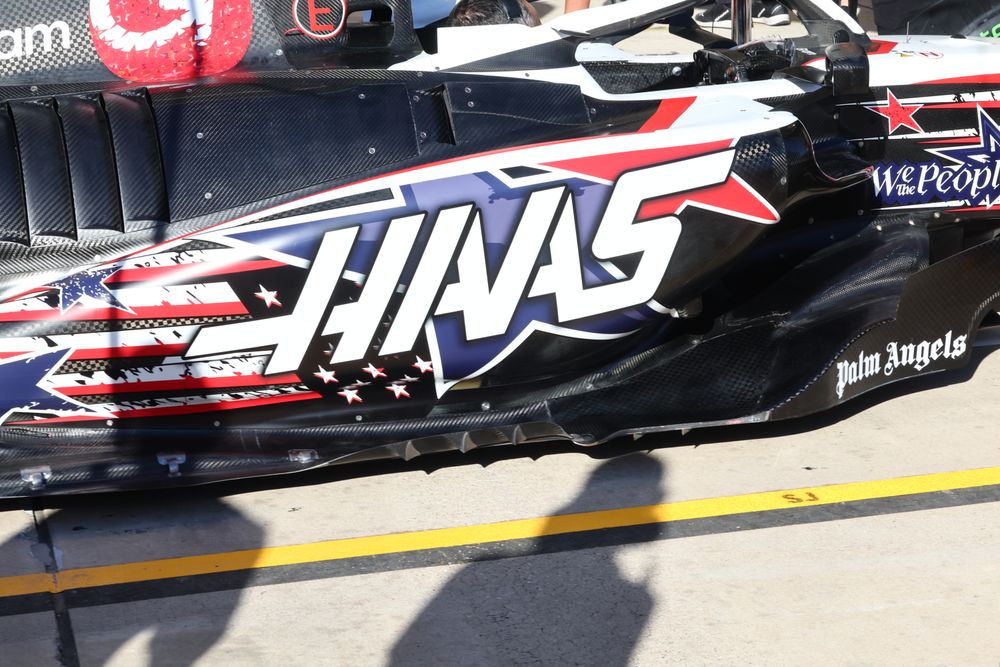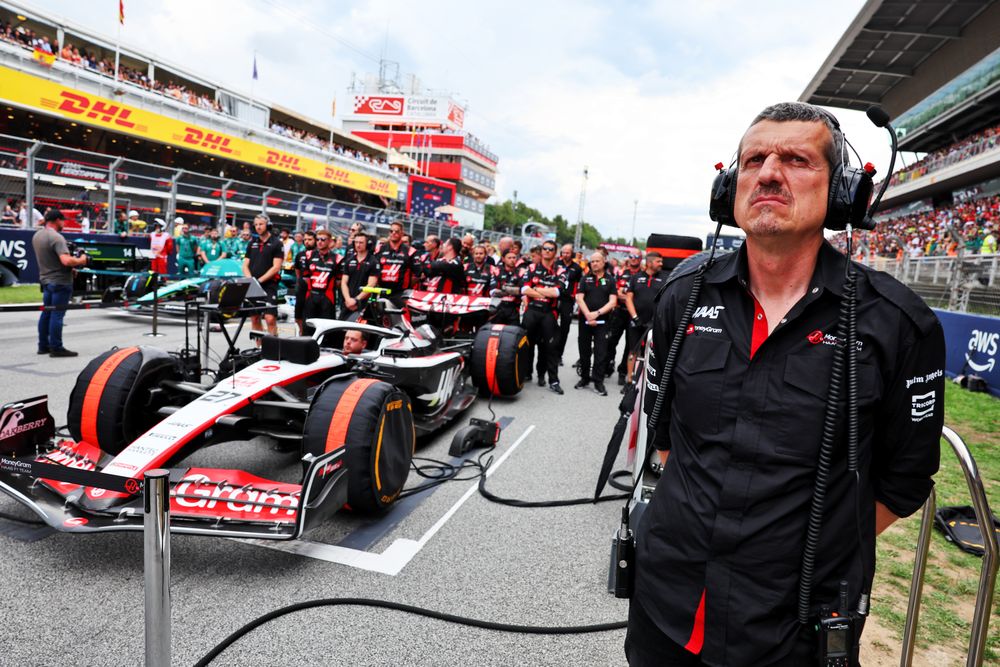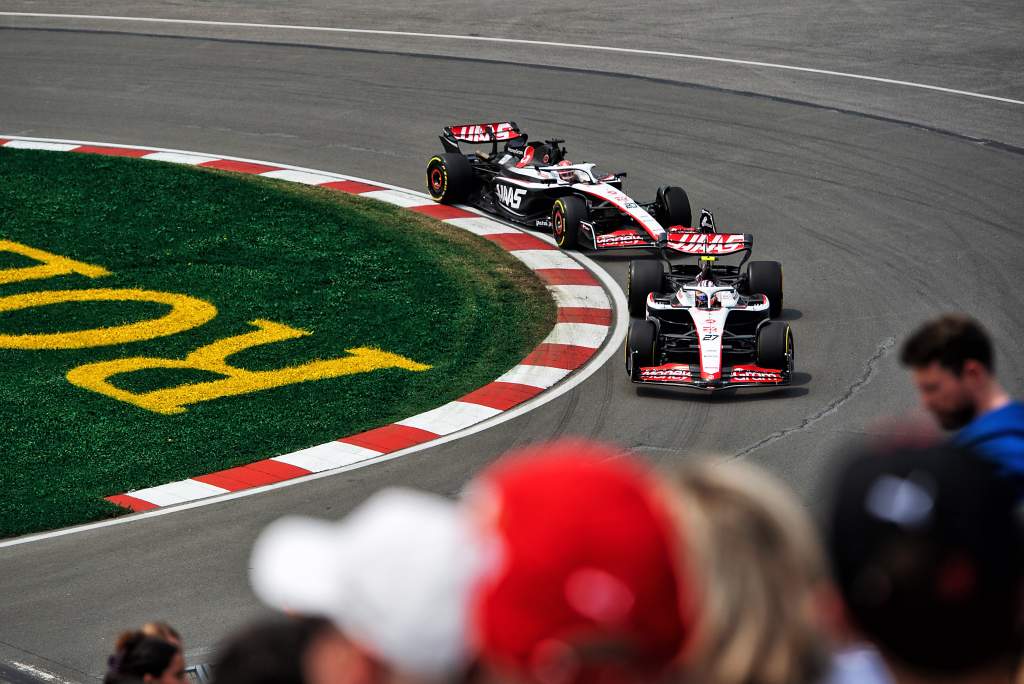Up Next

Haas heads to the scene of one of its biggest moments in Formula 1, experienced just 12 months ago, on the receiving end of a damning admission.
Kevin Magnussen's shock pole in qualifying for the 2022 Brazilian Grand Prix is unlikely to be repeated this weekend. But frankly so is the solitary point he would go on to score from there.
Only once in the last 10 races has a Haas driver scored a point, a run that has caused the team to drop from a competitive seventh in the championship to dead last after last weekend’s Mexican Grand Prix.
There, Nico Hulkenberg’s gutsy rearguard action came up short as, once again, Haas’s chronic tyre management problems caused it too much pain to bear on race day. By the end of the race, Hulkenberg was deliberately drifting the car, having taken the last lap “for myself”, saying that it “showed our tyre guys what some real slip is”.
The message, joking or not, was clear – the drivers cannot do more with this machinery. And when asked about championship rivals AlphaTauri and Williams scoring points yet again, Hulkenberg did not mince his words.
“It’s inevitable,” he said. “We’re paying a price for not bringing upgrades, for not finding performance.
“Hopefully it’s a wake-up call for everyone in the factory.
“At this rate you can’t compete in F1.”
What Hulkenberg said brought to mind something Guenther Steiner said after the Italian Grand Prix just a few races ago: “That’s where you end up when you cannot compete.”
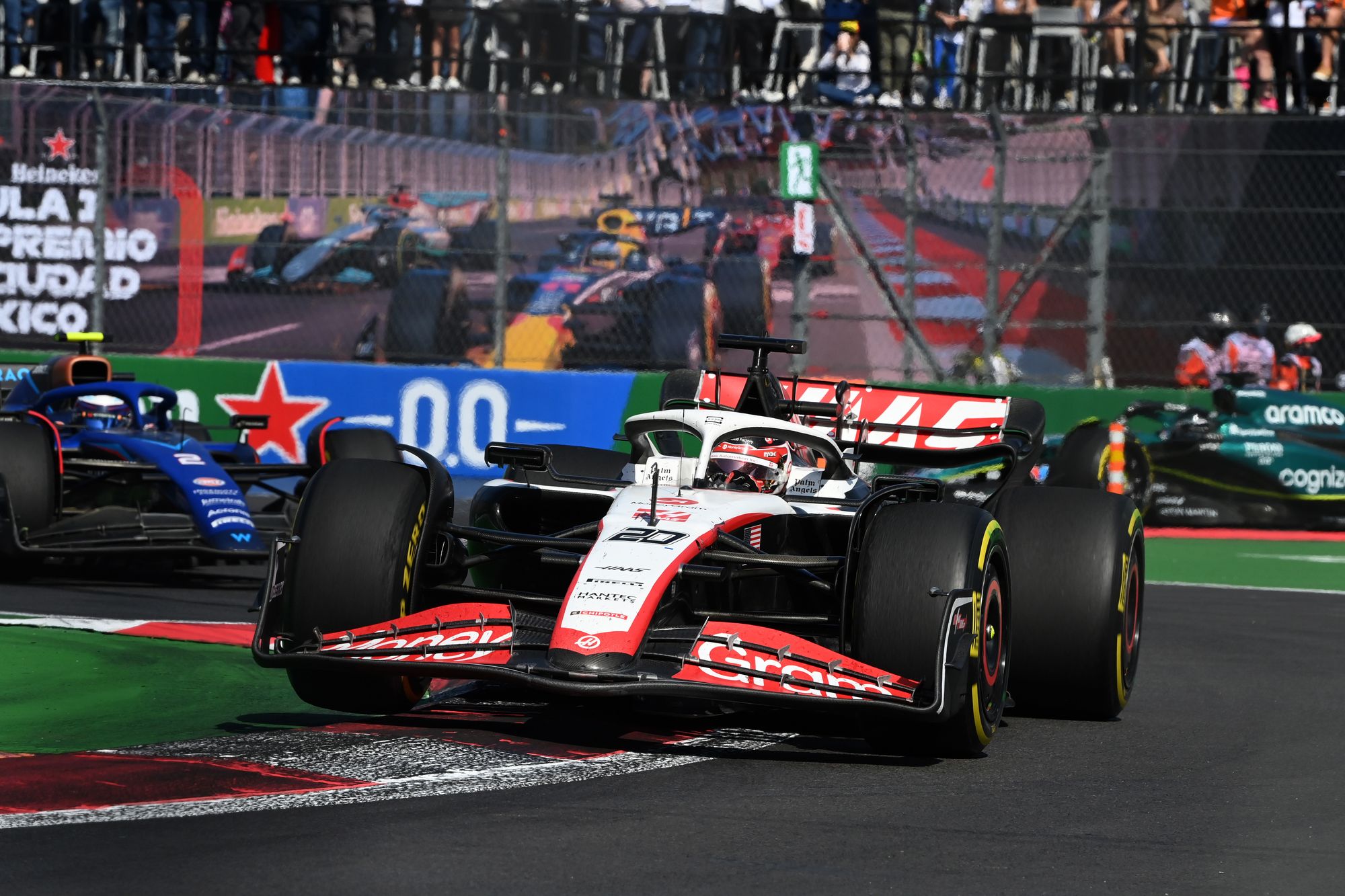
This is the kind of rhetoric defining Haas’s season at its worst. But it’s also fair given the team has just dropped to last in the championship and, on the balance of things, deserves to be there. It also looks the least likely of the four teams ‘fighting’ for seventh to score points again this season. Hauling itself off the foot of the standings seems like a big ask.
It’s a more concerning situation because the last two races have been run with a major upgrade that has underperformed.
So, Hulkenberg’s comments are a damning indictment of the work that went into that package, which is also a potentially problematic signpost for 2024 given this is meant to inform Haas’s development direction.
“The key learnings are that we maybe expected a little bit more from the upgrade,” team boss Guenther Steiner has said ahead of the Brazil weekend.
“But then it’s still a little bit up and down because Austin was a sprint weekend with not a lot of testing, and Mexico had such high altitude.
“We didn’t have enough total downforce last weekend, so I still haven’t come to a full conclusion. The expectations were a bit higher, although it’s giving us the right direction for next year.”
It is a familiar story for Haas, which has shown itself immensely capable at hitting the ground running at the start of a season but equally has struggled to develop thereafter. That is a particular concern this year with more funding and a bigger development effort than before, which has still not manifested itself in a stronger development curve, and Haas finishing a season better than it started it still feels unattainable.
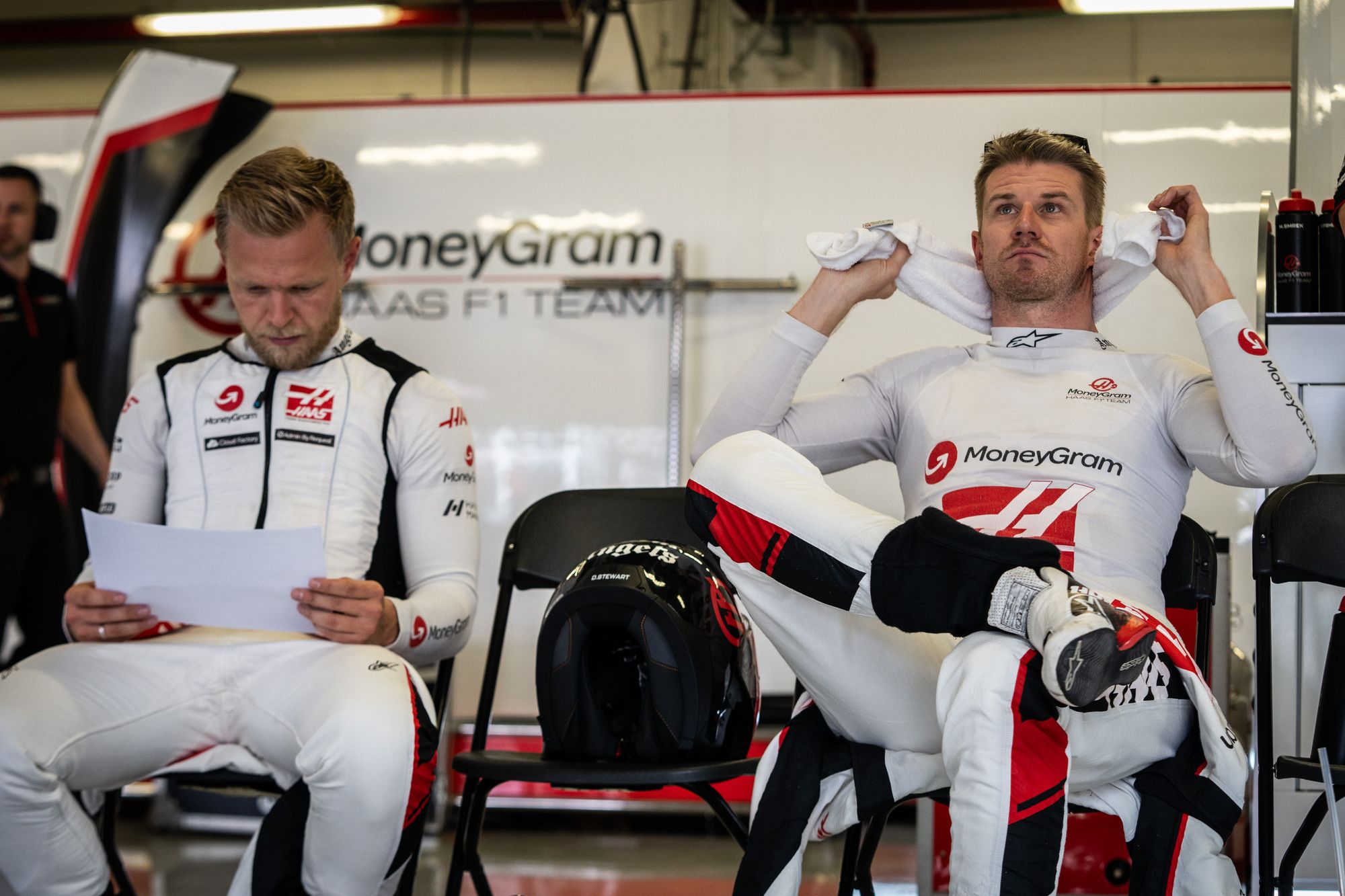
It is extremely difficult to do given it is F1’s smallest team with a unique structure, but Haas should still be capable of doing better than this – otherwise Hulkenberg would not be saying what he’s said, and Steiner would not be admitting that more was expected from the upgrade. They would just be shrugging, saying this is what Haas is and it’s just the reality they must accept.
Like at Monza, the race in Mexico had a mitigating circumstance attached – unique levels of downforce. It’s possible that the Haas in its current form, even when upgraded, does not produce the peak loads of its rivals to be competitive, but that at ‘normal’ tracks or races it can show its true potential.
If that’s the case then Brazil and Abu Dhabi (probably not Las Vegas in between) might be closer to what Haas experienced at Austin, the debut race for the package, which seemed to include some genuine bright moments.
“That was the first time and the first day where some positive signs and steps were seen,” Hulkenberg said before the Mexican GP weekend began.
“In terms of tyre management, this was one of the best races in a while for us. So, still exploring, still finding out and learning more about the package.
“And I hope there's more to come as we go.”
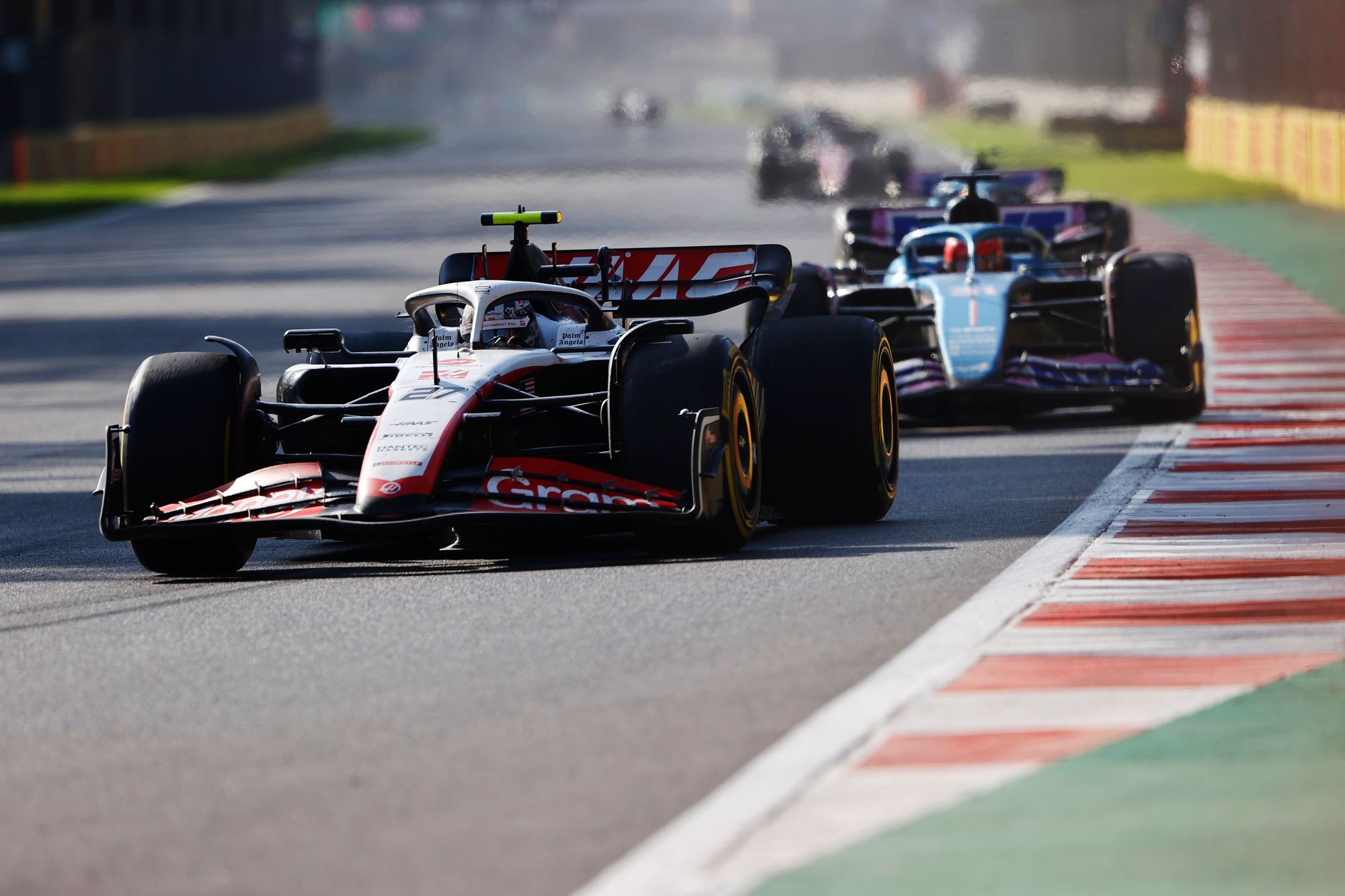
There was not in Mexico. But Haas will cling to flashes like it saw in Austin and believe all hope is not lost.
There will be bigger changes possible in the off-season, and the team’s track record of starting seasons well might suggest it handles development better when it is not having to juggle it alongside a live campaign.
But a lot of questions remain. How deep-rooted are these problems? Is the mild disappointment in the upgrade package a sign that Haas did not understand them, or how to solve them, as well as it thought? If that’s the case and even with this upgraded car it cannot compete now, can it be confident of competing better in 2024?
There might come a point where the Haas model reaches its limit. Perhaps there is only so much a team with split resources and infrastructure can compete, especially when other teams – think Williams and Sauber – were once badly underperforming but have become more competitive and competent during Haas’s time on the grid.
And there’s another factor to consider too: where does team owner Gene Haas’s current approach lie in all this? For the last couple of years, the F1 team has effectively relied on Steiner finding ways to prop it up without its eponymous owner reaching into his own pocket.
It feels like the team might just be bumping against a ceiling. Which would explain why the same old season keeps being played out - start well, plateau, decline, with only the level of peaks and troughs changing.
Haas had essentially been left needing to adapt to survive. And it did. Now it needs to find a way, in the words of Hulkenberg and Steiner before him, to compete.


